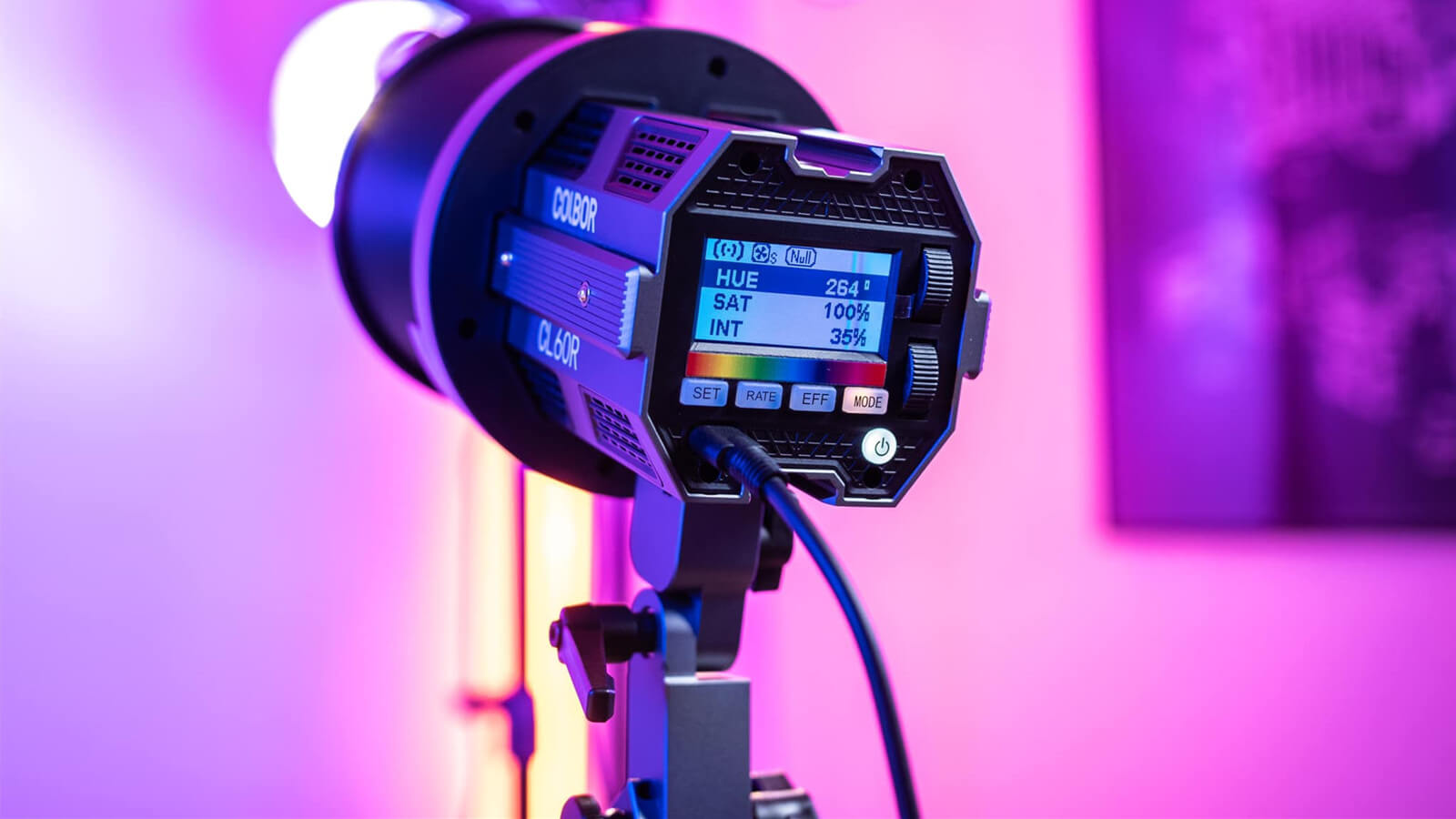An RGB light for videography can produce different colors of lighting by mixing red, green, and blue light. It can be used in video production to generate various moods and effects, such as lighting the backdrop, the subject, or the green screen. In this article, we will focus on its types and uses to help you learn more about it. You can also learn how to use it to create a cinematic look in your videos.

What are the types of RGB LED video light?
RGB color video light comes in different types, depending on the features, functions, and uses. Here are some examples:
RGB: This is the most basic kind of RGB LED video light. By varying the intensity of the red, green, and blue LEDs, it is possible to change the color temperature and hue of the light. It can create more than 16 million hues, however, it is unable to create additional shades of white light or pure white light. It works well for creative lighting and color effects, but not for reproducing colors accurately.
RGBW: This furthermore features a white LED, which can be either cold white (CW) or warm white (WW). Combining the white LED with the RGB LEDs can provide both pure white light and different white light tints. In comparison to RGB video light, it may also provide more brightness and contrast. It works well for precise color rendering as well as creative lighting.
RGBWW: One warm white and one cool white extra white LED are included in this kind of RGB LED video light. By combining the two white LEDs with the RGB LEDs, it may provide a greater variety of white light and more complex colors.
RGB-CCT: This RGB LED light for video features color-correction technology (CCT), which modifies the ratio of warm white to cool white LEDs to alter the light's color temperature and tint. By utilizing the CCT, it may generate various hues of white light and a white light that is more accurate and constant.
RGBIC: It contains an intelligent control (IC) chip that can independently control each LED. Using the IC chip, it can provide more complicated and dynamic lighting effects such as gradients, patterns, animations, and so on. It also has a higher brightness and contrast than the RGB-CCT LED.
What are the uses of RGB light for videography?
RGB LED light can be used for various purposes and effects in video production, such as:
Illuminate the background and subject with RGB lighting
You can use RGB light for videography to create a colorful and dynamic backdrop for your videos as well as to light up your subject with various hues. You can modify the brightness, color temperature, and saturation of the light to meet your requirements and tastes. For example, a warm and soft light may be used for a romantic scenario, while a cool and brilliant light can be used for a future one. By employing complimentary colors or varied light placements, you may also utilize RGB LED light to create contrast and depth in video shooting.
Use RGB light for videography to create green screen background
RGB LED lighting may also be used to create a green screen background, allowing you to replace the background in post-production with whatever picture or video you desire. To produce a consistent and even green screen, use a white backdrop and two RGB light sources, each set to the same green color. You may also use a green fabric or paper as a background with RGB lighting to enhance the green hue and decrease shadows.
Use RGB LED video lighting to create cinematic scenes
With the ability to replicate realistic scenarios or lighting effects, RGB LED light may also be utilized to create cinematic scenes. Using various colors, patterns, and speeds, RGB LED light may be used, for instance, to produce effects such as fire, lightning, TV, police, and more. RGB LED lighting may also be used to set the tone and ambiance of a scene by selecting colors that correspond with its mood or emotion. Red light, for instance, can be used in tense or violent scenes, and blue light in tranquil or depressing ones.
Video tutorial: How to use RGB light for videography to create cinematic look?
Video by David Zhou
In this video, the YouTuber David Zhou tells how to use one COLBOR CL220 and three COLBOR CL60R RGB LED light to create a professional and cinematic look for your videos. The video covers the following topics:
- Key Light - The main light source that illuminates the subject and creates contrast and shadows.
- Fill Light - The secondary light source that fills in the shadows and reduces the contrast created by the key light.
- Rim Light - The light source that creates a rim or halo effect around the subject and separates them from the background.
- Background Light - The light source that illuminates the background and adds depth and color to the scene.
The video also shows how to mix it up with RGB (red, green, and blue) lights to create different moods and atmospheres in your video, such as warm, cold, dramatic, or romantic.
